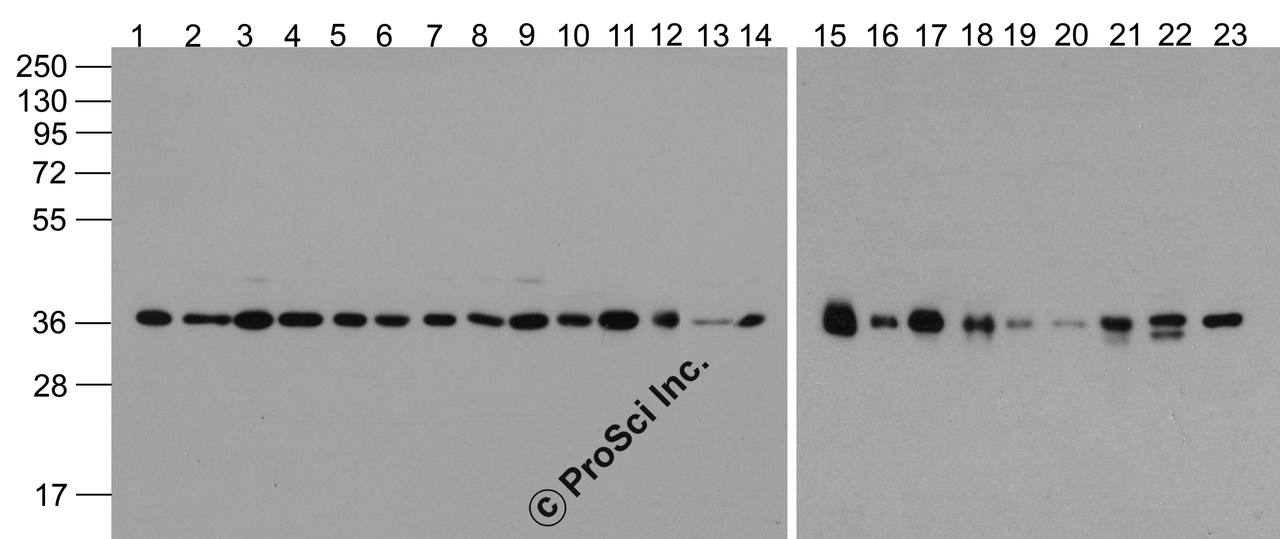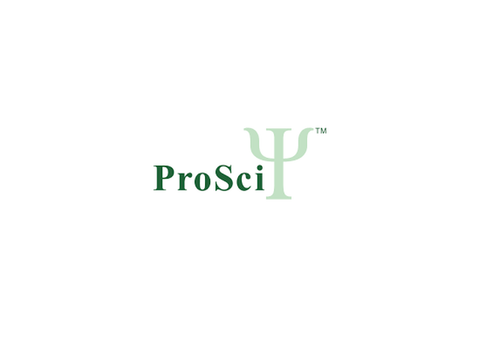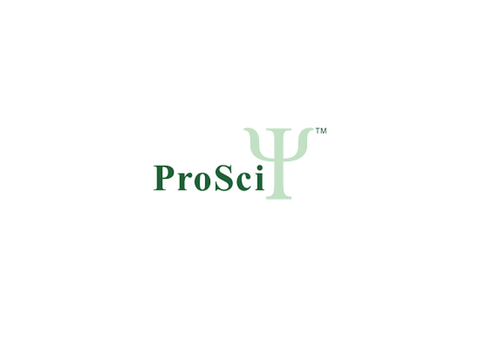Product Description
GAPDH Antibody (HRP) | 3781-HRP | ProSci
Host: Rabbit
Reactivity: Human, Mouse, Rat, Rabbit, Chicken
Homology: N/A
Immunogen: HRP-GAPDH antibody was raised against a synthetic peptide containing 16 amino acids near the carboxy terminus of GAPDH.
Research Area: Signal Transduction, Neuroscience, Homeostasis
Tested Application: E, WB
Application: HRP-GAPDH antibody can be used for detection of GAPDH by Western blot at 0.5 - 1 μ/ml.
Antibody validated: Western Blot in human, mouse, and rat samples. All other applications and species not yet tested.
Specificiy: HRP-GAPDH antibody is human, mouse, rat, rabbit, and chicken reactive.
Positive Control 1: Cat. No. 1201 - HeLa Cell Lysate
Positive Control 2: N/A
Positive Control 3: N/A
Positive Control 4: N/A
Positive Control 5: N/A
Positive Control 6: N/A
Molecular Weight: Predicted: 37 kDa
Observed: 36 kDa
Validation: N/A
Isoform: N/A
Purification: HRP-GAPDH antibody is affinity chromatography purified via peptide column.
Clonality: Polyclonal
Clone: N/A
Isotype: IgG
Conjugate: HRP
Physical State: Liquid
Buffer: HRP-GAPDH antibody is supplied in PBS containing 1% BSA and 0.02% thimerosol.
Concentration: 1 mg/mL
Storage Condition: HRP-GAPDH antibody can be stored at 4˚C for three months and -20˚C, stable for up to one year.
Alternate Name: HRP-GAPDH, Glyceraldehyde-3-phosphate dehydrogenase, G3PDH, GAPD
User Note: Optimal dilutions for each application to be determined by the researcher.
BACKGROUND: Glyceraldehyde-3-phosphate dehydrogenase (GAPDH) catalyzes the reversible oxidative phosphorylation of glyceraldehyde-3-phosphate in the presence of inorganic phosphate and nicotinamide adenine dinucleotide (NAD) , an important energy-yielding step in carbohydrate metabolism. It also is involved in a number of cellular processes such as membrane fusion, phosphotransferase activity, DNA replication and repair, and nuclear RNA export (1) . GAPDH also plays a role in different pathologies such as cancer progression, apoptosis, and neuronal diseases such as Alzheimer’s and Huntington’s disease (2) . GAPDH is constitutively expressed at high levels in almost all tissues and cell lines making it ideal for use as a loading control marker in immunoblots.
 Euro
Euro
 USD
USD
 British Pound
British Pound
 NULL
NULL










